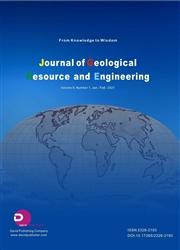Characteristic Features of Lapis Lazuli from Different Provenances, Revised by µXRF, ESEM, PGAA and PIXE
引用次数: 1
Abstract
The objective of this study is to find out, to what extent the geochemical characteristics of lapis lazuli can be utilized in respect to its provenance. A wide range of variables is taken into consideration depending on the quantity of samples analysed from a specific geological region and the methods applied. In order to provide evidence, a multi-technique analytical approach using µXRF, ESEM, PGAA and PIXE is applied to samples from the most famous deposits of lapis lazuli. Special elements determined as fingerprints are compared in relation to the forming conditions obvious in textural features. The results and statistical output allow a differentiation that enables an optimized local classification of the blue stone. An absolute requirement for all geo-tracing performed on blue colored cultural objects of unknown provenance is awareness of the limits of analysis. The possible sources of lapis lazuli are tested by analysing the blue pigment used as paint on murals and ink on manuscripts from the Silk Road.不同产地青金石的特征特征,用µXRF、ESEM、PGAA和pxe订正
本研究的目的是找出青金石的地球化学特征在多大程度上可以用于其来源。根据特定地质区域分析的样本数量和应用的方法,考虑了广泛的变量。为了提供证据,将使用µXRF、ESEM、PGAA和PIXE的多技术分析方法应用于最著名的青金石矿床的样品。将被确定为指纹的特殊元素与纹理特征中明显的形成条件进行比较。结果和统计输出允许差异化,从而能够对青石进行优化的局部分类。对来源不明的蓝色文物进行所有地理追踪的一个绝对要求是意识到分析的局限性。通过分析丝绸之路壁画上用作颜料和手稿上用作墨水的蓝色颜料,测试了青金石的可能来源。
本文章由计算机程序翻译,如有差异,请以英文原文为准。
求助全文
约1分钟内获得全文
求助全文

 求助内容:
求助内容: 应助结果提醒方式:
应助结果提醒方式:


